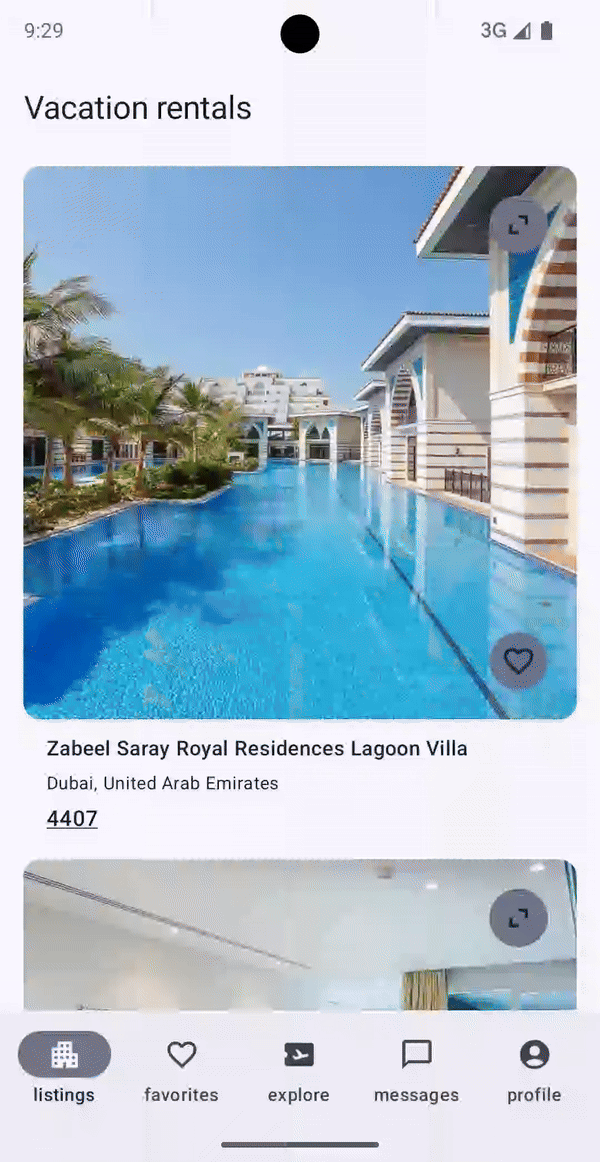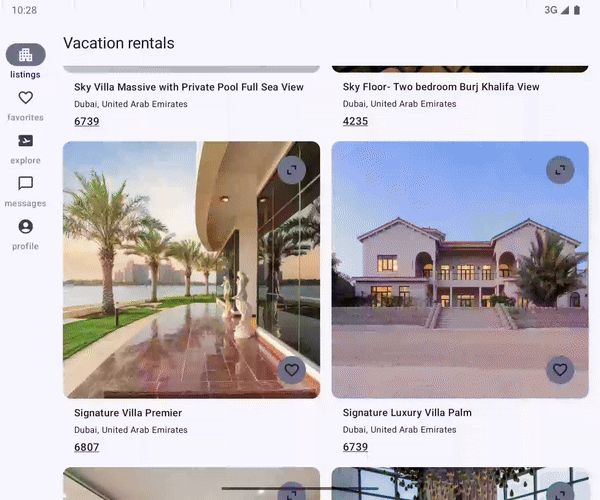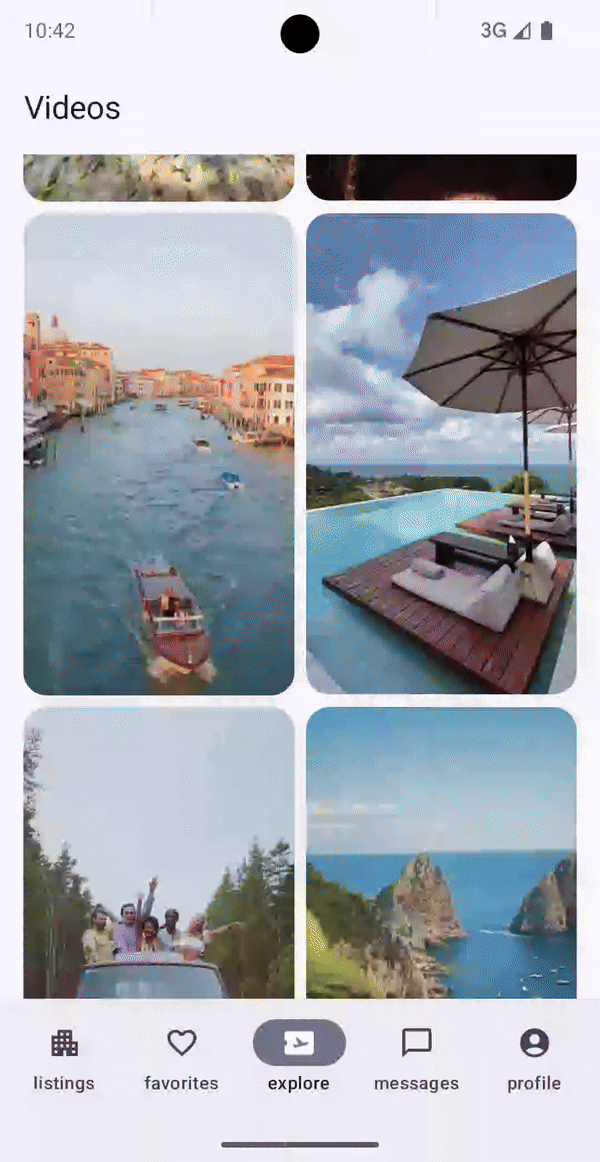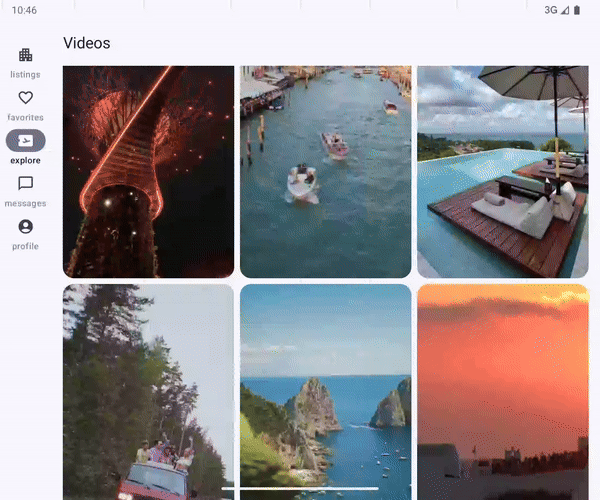This project outlines how the declarative principles of Compose, especially how its state ownership, production and management semantics provide systemic benefits when extended to the entirety of the UI layer. I also refer to this concept as "x as state".
In particular the following are explored:
- Navigation as state (TreeNav: https://github.com/tunjid/treeNav)
- Pagination as state (Tiler: https://github.com/tunjid/Tiler)
- Functional reactive state production (MVI) as a UDF implementation ( Mutator: https://github.com/tunjid/Mutator)
The above are used to implement a system design that supports
- Shared element transitions using a single root
LookaheadScopein theNavHost( seeAdaptiveContentHostandSharedElements.kt) - Predictive back animations and seeking using an immutable hoisted navigation state that is adapted on a screen configuration basis.
- Seeding pagination pipelines from navigation arguments.
- Persistence of navigation state to disk to restore navigation past process death, including after system reboots.
The above provide a system where "first frame readiness" is guaranteed when navigating between
navigation destinations, obviating the need for legacy APIs from View such as
Activity.postponeEnterTransition()
and Activity.startPostponedEnterTransition().
| Portrait orientation | Landscape orientation |
|---|---|
 |
 |
 |
 |
There are 4 screens in the app:
ListingFeedScreen: Vertical grid. Feed and list in a list-detail canonical layout implementation. Each feed item has a horizontal list of non paginated images.ListingDetailScreen: Detail screen in a canonical list-detail implementation. Has a paginated horizontal list for media displayed.GridGalleryScreen: Grid gallery layout for media, it is paginated.PagerGalleryScreen: Full screen paged gallery layout for media, it is paginated. Also implements drag to dismiss withModifier.Node.
All screens have the same state declaration:
@Composable
fun FeatureScreen(
modifier: Modifier = Modifier,
state: State,
actions: (Action) -> Unit,
)Where State is an immutable data class, however a class backed by compose state is as effective.
actions is an event sink commonly used by MVI frameworks and is a stable Compose parameter.
Routing to the screen is defined higher up using remember retained semantics scoped to navigation:
@Composable
fun FeatureRoute() {
val stateHolder = rememberRetainedStateHolder<ListingDetailStateHolder>(
route = this@FeatureRoute
)
FeatureScreen(
modifier = Modifier.backPreviewBackgroundModifier(),
state = stateHolder.state.collectAsStateWithLifecycle().value,
actions = stateHolder.accept
)
}Here, based on navigation and UI state including predictive back progress, the FeatureScreen can
be Composed.